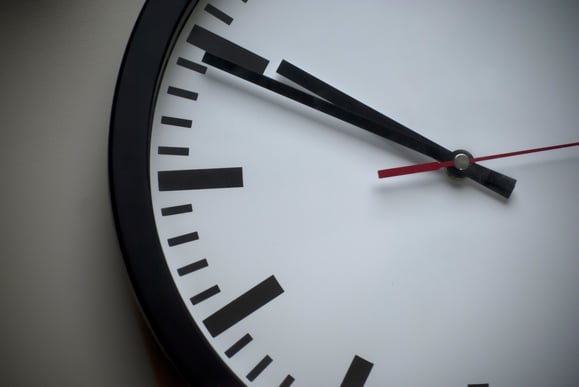When it comes to the healthcare industry, timing is quite literally the difference between life and death. Hospitals strive for efficiency, accuracy, and safety - which can all be compromised if time isn't tracked and displayed consistently across your facility. Keep your staff in sync and your response time short when you implement a synchronized clock system.

The Benefits of Synchronized Clocks
Synchronized systems (wired, wireless, digital, and/or analog) display cohesive timekeeping and operate with automatic controls and settings. When clocks function in unison, facility operations as a whole are much more efficient and maintenance teams see a return in time otherwise allocated to programming, adjusting and fixing the systems.
Accurate timekeeping in the Emergency Department can help staff efficiently and effectively provide the best level of patient care. From Code Blue alerts to timed medication administration, time is of the essence. When a "Code Blue" is called and a patient is in cardiac arrest, there is a very narrow window of 10-20 seconds for chest compressions and resuscitation measures to be performed. If the timing is off or your reaction is delayed, you may not be able to perform the necessary measures to save the patient. Inaccurate timekeeping could cost you those vital last few seconds. With a synchronized clock system, you can hook up your clocks directly to other hospital machinery like your nurse call solution to optimize your emergency response workflow. Once connected, when a code is called, alerts are sent to the system to automatically start an elapsed timer to count up or count down depending on the hospital's preference.
Consider the value of cohesive timekeeping and elapsed timers in Operating Rooms. In the OR, there are typically multiple clocks - one that displays the time of day and the other that displays how long the surgeons have been operating (working to keep the procedures as short as possible in the interest of positive recovery outcomes). Having an elapsed timer assures your surgical teams that they are tracking patient conditions accurately.
Stay compliant with HIPPA time synchronization mandates and help your facility minimize and even avoid legal issues altogether with accurate reporting on time, all the time.
A Look at Your Options: Wireless, IP-PoE, Wi-Fi, Wired & TalkBack Wireless
Wireless Clocks: Sapling's wireless clocks operate on the patented 915-928 MHz frequency-hopping technology. This technology allows multiple secondary clocks to operate on the same frequency range without interfering with any additional wireless products you may have. The master clock, that can receive time from any SNTP/NTP server or GPS satellite, sends out a signal to the secondary analog and/or digital clocks. Once the secondary clocks receive the signal, they can retransmit that signal to surrounding clocks, ensuring that all of the devices display the same time. This ability eliminates the cost for additional repeaters and transmitters. These clocks can typically be retrofitted to an existing system as well as removes the need for complicated wiring.
IP-PoE Clocks: Each clock is powered by PoE or Power over Ethernet, which provides power and data over the same Ethernet cable. Each clock can receive its time from a (S)NTP time server, eliminating the need for a master clock. When choosing Sapling for IP clocks, all devices within the system can be controlled independently using Sapling's built-in web interface. This software allows you to monitor every feature of the IP clock system from anywhere within a network connection. PoE can easily integrate with existing networks.
Wi-Fi Clocks: Combine wireless simplicity with total control. Say goodbye to running wires between the clocks as these devices receive their time data over Wi-Fi from an internet or in-house NTP server - making a master clock optional. Sapling's Wi-Fi clocks come pre-programmed with the web addresses of public internet NTP servers. Each clock can be set and controlled through a user-friendly built-in web interface from any computer or mobile device. These clocks are a great solution for multi-building campus environments utilizing existing Wi-Fi infrastructure.
Wired Clocks: Also know as Sync-Wire systems, wired clocks are the most popular system in the United States. These clocks are run using a power circuit that acts as its time base. The clocks receive hourly correction which synchronizes both the minute and the second hand. Providing maximum adaptability, Sapling's clocks are capable of recognizing 59 minute correction, 58 minute corretion as well as National Time/Rauland correction. This technology can be powered using either 24V or 115V.
TalkBack Wireless Clocks: Sapling's TalkBack technology allows the secondary clocks to report back its current battery levels, signal strength, mechanical (analog) or display (digital) alerts, the last time a clock received a signal and much more to the master clock. Most wireless clocks can only receive the time but these devices allow facility managers to be completely proactive when it comes to monitoring and maintaining the system. Ideal for multiple building environments, this technology works seamlessly without the need to install any wires and the ability to manage the entire clock system from one location.
Which system fits your facility best? Download our guide "How To Choose the Right Synchronized Clock System" for three key questions to consider when looking to invest in your facility's timekeeping solution.




